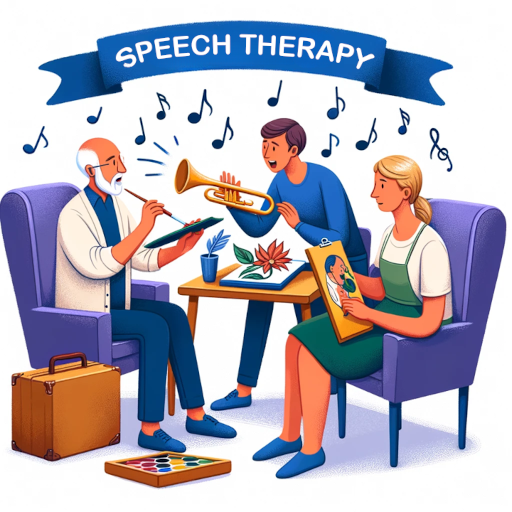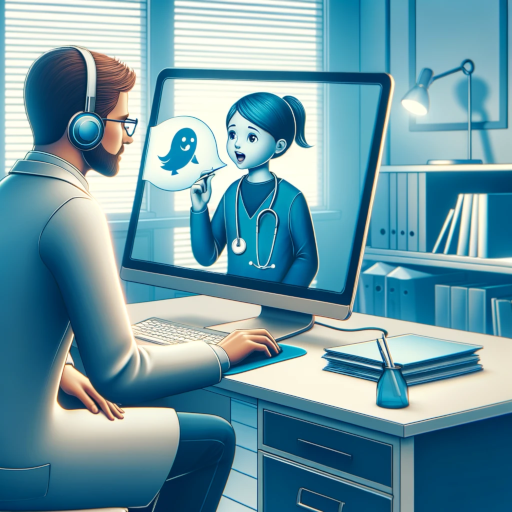



When we talk about Traumatic Brain Injury (TBI), the conversation often revolves around immediate medical interventions and the critical first steps of recovery. However, what’s less frequently explored, and arguably as crucial, is the long-term journey of rehabilitation, particularly regarding speech and communication abilities. For adults navigating the aftermath of a TBI, the path to regaining their voice, in the literal and metaphorical sense, is often a complex and deeply personal endeavor.
In the world of speech therapy, we’re accustomed to discussing the clinical aspects: the types of aphasia, the strategies for cognitive-communication disorder, or the exercises to improve verbal expression. Yet, there’s an unspoken dimension that’s seldom addressed in professional circles – the emotional and psychological journey of relearning to communicate. This journey isn’t just about reacquiring language or speech skills; it’s about reclaiming one’s identity and place in the world, which is often shaken after a TBI.
The narrative of speech recovery post-TBI is not just a medical one; it’s a story of resilience, adaptation, and often, reinvention. It’s about how individuals adapt their communication to fit their new realities and how they learn to express themselves again in a world that might not fully understand their challenges. For many, it’s not just about the struggle to find the right words, but the journey to rediscover their voice and rebuild their life with it.
This is where the role of online speech therapy, especially in treating adult neurogenic speech and language disorders, becomes pivotal. The virtual landscape offers a unique blend of accessibility, comfort, and personalized care that traditional settings often struggle to provide. Through online platforms, therapy transcends geographical and physical limitations, bringing the therapeutic experience into the familiar environment of the patient’s home. This approach not only makes therapy more accessible but also more relatable and integrated into the patient’s daily life.
In this exploration, we will delve into the nuances of speech recovery after a TBI, with a lens focused not only on the clinical aspects but also on the human experience of regaining one’s communicative footing. We’ll explore how online speech therapy, particularly those that employ a passion-based approach, can be a game-changer in this journey. It’s a journey not just back to where one was, but forward to where one can be, in the rich landscape of communication and connection.

Traumatic Brain Injury (TBI) is a complex condition with far-reaching effects, and one of its most significant impacts is on an individual’s ability to communicate. A TBI, as defined by experts, results from a physical trauma to the head, leading to immediate and sometimes long-term brain damage. These injuries can profoundly affect speech, language, cognitive functions, and even swallowing abilities, disrupting the everyday lives of those affected. Learn more about TBI
The symptoms of TBI are as diverse as the individuals it affects. Physically, it might manifest as fainting, seizures, headaches, or balance issues. Sensory challenges can include sensitivity to light and sound or vision problems. However, it’s the cognitive and communicative dimensions of TBI that are often the most challenging and less discussed. These include difficulties with attention, memory, planning, problem-solving, and a range of speech and language issues such as dysarthria, apraxia of speech, word-finding difficulties, and problems with social communication. For many, swallowing difficulties pose additional risks, like choking while eating.
Understanding the causes of TBI is crucial for contextualizing its treatment. Falls, car accidents, sports injuries, and military combat are among the common causes. Each cause can result in a unique pattern of cognitive and communicative challenges, necessitating a tailored approach to therapy.

The field of speech therapy has undergone a significant transformation over the years, especially with the advent and advancement of technology. This shift from traditional, in-person therapy to online platforms represents more than just a change in medium; it signifies a broader evolution in how we approach and administer speech and language therapy, particularly for adults with neurogenic disorders.
Historically, speech therapy has been grounded in face-to-face interactions, with the therapist and client sharing a physical space. This setting provided a sense of immediacy and personal connection. However, it also came with limitations, such as accessibility issues for those living in remote areas or with mobility challenges. The traditional model often required significant time and effort for both therapists and clients, including travel and scheduling challenges.
Online speech therapy, on the other hand, has ushered in a new era of convenience and accessibility. With the use of digital platforms, therapy sessions can be conducted from anywhere, significantly reducing the barriers of distance and physical mobility. This has been particularly beneficial during times when in-person interactions are limited, such as during the recent global health crises.
One of the less discussed but vital aspects of online speech therapy is its capacity for personalization and flexibility. Digital platforms allow therapists to tailor their approach to each individual’s needs, interests, and lifestyle. This personalized approach is especially effective in treating adults with neurogenic speech disorders, as it aligns therapy with the client’s daily routines and personal goals.
Online speech therapy also breaks down barriers that often exist in traditional settings. Clients who might feel self-conscious or anxious in a clinical environment may find it easier to engage and express themselves in the comfort of their own homes. This sense of comfort can lead to more effective therapy sessions, as clients are more relaxed and open to participating.
The integration of technology in speech therapy isn’t just about conducting sessions online; it’s about harnessing the power of digital tools to enhance the therapy experience. From interactive exercises to speech recognition software, technology offers a range of tools that can make therapy more engaging and effective. These tools allow for real-time feedback, progress tracking, and the incorporation of multimedia elements to enrich the therapeutic experience.
The evolution from traditional to online speech therapy is more than a shift in the medium—it’s a reflection of the changing landscape of healthcare and rehabilitation. It represents a move towards more client-centered, accessible, and flexible therapy options, aligning with the evolving needs and lifestyles of adults with neurogenic speech disorders.

The rehabilitation journey for individuals with Traumatic Brain Injury (TBI) involves various innovative approaches, particularly in speech therapy. These methods not only address the traditional speech and language impairments but also embrace a more holistic view of recovery, considering the patient’s passions, lifestyle, and the integration of modern technology.
One of the most compelling and less discussed approaches in the realm of speech therapy for TBI is the passion-based therapy approach. This method diverges from conventional practices by centering therapy around the client’s interests and passions. Instead of standard exercises, therapy sessions are tailored to engage clients in activities they love, be it music, art, cooking, or storytelling. This approach not only enhances motivation and engagement but also ensures that therapy is deeply relevant and meaningful to the client’s life. By integrating personal interests into therapy, speech-language pathologists can tap into the client’s intrinsic motivation, fostering a more enjoyable and effective therapeutic experience.
In the context of TBI, where mobility and access can be significant hurdles, teletherapy emerges as a groundbreaking solution. Online speech therapy transcends geographical boundaries and physical limitations, bringing specialized care directly to the client’s home. This method of delivery is particularly beneficial for TBI survivors who may face challenges in commuting to a traditional therapy setting. Moreover, teletherapy allows for greater scheduling flexibility, accommodating the varied and often unpredictable nature of a TBI survivor’s daily routine.
The integration of advanced technology in speech therapy for TBI is another area where innovative strides are being made. This includes the use of virtual reality (VR) and augmented reality (AR) to create immersive therapy environments, gamified therapy apps that turn exercises into engaging activities, and software tools that provide real-time feedback and progress tracking. These technologies not only make therapy sessions more interactive and enjoyable but also enable customized therapy experiences that can adapt to the changing needs and abilities of the client.
These innovative approaches in speech therapy for TBI signify a shift towards more personalized, engaging, and accessible rehabilitation strategies. By embracing the client’s passions, leveraging teletherapy, and integrating cutting-edge technology, speech therapy is evolving to meet the unique needs and preferences of TBI survivors, thereby enhancing their recovery journey and quality of life.

Speech recovery after a traumatic brain injury (TBI) is a multifaceted process that extends beyond traditional therapy techniques. The recovery journey involves practical strategies that can be seamlessly integrated into daily life, empowering individuals to reclaim their communicative abilities in real-world settings. These strategies, often overlooked in mainstream discussions, are pivotal for fostering independence and confidence in individuals recovering from TBI.
One effective approach is integrating speech therapy exercises into everyday activities. This method, known as functional therapy, focuses on practical communication tasks relevant to the individual’s daily life. For instance, practicing ordering food at a restaurant, engaging in phone conversations, or discussing a favorite hobby can be therapeutic exercises. By embedding therapy in routine activities, clients not only improve their speech and language skills but also their confidence in using these skills in social and professional contexts.
In the age of digital technology, leveraging apps and software designed for speech rehabilitation offers a contemporary twist to traditional therapy methods. These tools can provide interactive, engaging exercises that clients can use independently, offering them control over their rehabilitation process. Speech recognition apps, language games, and virtual reality scenarios are examples of how technology can make speech practice more dynamic and motivating.
Reading aloud and writing are often underutilized tools in speech recovery. Engaging in these activities can significantly enhance language skills, including vocabulary, sentence structure, and articulation. Reading aloud from a favorite book or writing short stories or journal entries can serve as effective therapeutic exercises, aiding in both speech and cognitive rehabilitation.
Encouraging regular social interaction is crucial for speech recovery post-TBI. Conversing with family members, friends, or even participating in online community groups can provide real-life practice and feedback. These interactions not only improve speech and language skills but also help in rebuilding social confidence, often impacted after a TBI.
Finally, incorporating mindfulness and relaxation techniques can be highly beneficial for individuals recovering from TBI. Stress and anxiety can significantly hinder speech and language performance. Practices like guided meditation, breathing exercises, and progressive muscle relaxation can help reduce stress, thereby improving overall communication abilities.
These practical strategies for speech recovery post-TBI highlight the importance of integrating therapy into the fabric of everyday life. By embracing a holistic approach that combines traditional techniques with modern technology and lifestyle-oriented practices, individuals recovering from TBI can achieve significant improvements in their speech and communication skills.
The story of Bob Woodruff, the ABC News correspondent who suffered a severe traumatic brain injury (TBI) in Iraq, is not just a tale of personal resilience and courage but also an enlightening case study in the field of speech recovery post-TBI. His journey provides valuable insights into the possibilities of rehabilitation and the pivotal role of innovative speech therapy.
In 2006, Woodruff sustained a life-threatening injury due to a roadside bomb in Iraq. This incident led to a severe TBI, requiring immediate and complex medical attention. Woodruff’s initial recovery phase, which included a medically induced coma and a craniectomy, was marked by uncertainty. However, the remarkable aspect of his recovery began when he woke up from the coma. He had to relearn basic human functions, including walking and talking, a process that required immense determination and resilience.
Woodruff’s TBI had a significant impact on his speech and language abilities, common in many TBI cases. He faced challenges with word-finding, a reduced vocabulary, and difficulties in sentence formation – issues that are emblematic of aphasia, a common consequence of brain injuries. His journey back to being a renowned journalist required not only physical rehabilitation but intensive speech and language therapy.
The role of speech therapy in Woodruff’s recovery was crucial. Through consistent and tailored speech-language therapy, he gradually regained his ability to communicate effectively. The therapy focused on relearning language skills, improving speech clarity, and cognitive exercises to enhance memory and processing skills. This intensive rehabilitation was instrumental in Woodruff returning to his career in journalism, a testament to the effectiveness of speech therapy in TBI recovery.
Motivated by his experience, Woodruff, along with his wife, Lee, established the Bob Woodruff Foundation. This initiative reflects a deeper understanding of the challenges faced by TBI survivors. By providing support and resources, the foundation plays a vital role in the recovery of other service members who have suffered TBIs. It emphasizes the importance of quality medical care, social support, and the need for specialized rehabilitation services.
Bob Woodruff’s story is not just a narrative of personal triumph but also a source of inspiration and a beacon of hope for many individuals dealing with the aftermath of TBI. It underscores the importance of specialized care, the potential for recovery, and the power of resilience in the face of overwhelming odds.

As we conclude this exploration of speech therapy in the context of Traumatic Brain Injury (TBI), it’s clear that we are entering a new era in the field. This era is not defined solely by advances in technology or methodology, but by a deeper understanding of the human element in recovery – the emotional, psychological, and personal dimensions that are as crucial as the physical aspects of rehabilitation.
What sets this new era apart is the holistic approach to speech therapy. It’s an era where the focus is not just on the mechanical aspects of speech and language but on the individual’s entire being and their place in the world. The passion-based approach, for instance, is a testament to this shift. It emphasizes that effective therapy must resonate with what matters most to the individual, making the recovery process not only more effective but also more fulfilling.
The advent of online speech therapy has revolutionized access to care, particularly for those who might have found traditional therapy settings challenging to reach or navigate. This accessibility has opened doors for many individuals, allowing them to receive high-quality therapy in the comfort and familiarity of their own homes. It’s a leap forward in democratizing healthcare and ensuring that distance or mobility issues are no longer barriers to receiving top-tier speech therapy.
Stories like that of Bob Woodruff underscore the incredible resilience of the human spirit and the power of community support in the face of adversity. They remind us that recovery from TBI is not just a journey of regaining lost abilities but also an opportunity for growth, learning, and perhaps, transformation.
As we embrace this new era of speech therapy, it’s crucial to continue evolving and adapting our approaches to meet the diverse needs of those we serve. The field must remain open to innovation, always seeking ways to enhance the effectiveness and reach of therapy. Whether it’s through integrating new technologies, exploring creative therapeutic approaches, or simply listening more closely to the needs of those we serve, the future of speech therapy for TBI looks bright and promising.
In this journey of recovery and rehabilitation, one thing remains constant – the unwavering commitment to helping individuals find their voice again and reclaim their place in the world, one word at a time.

Seth Koster M.S. CCC-SLP



